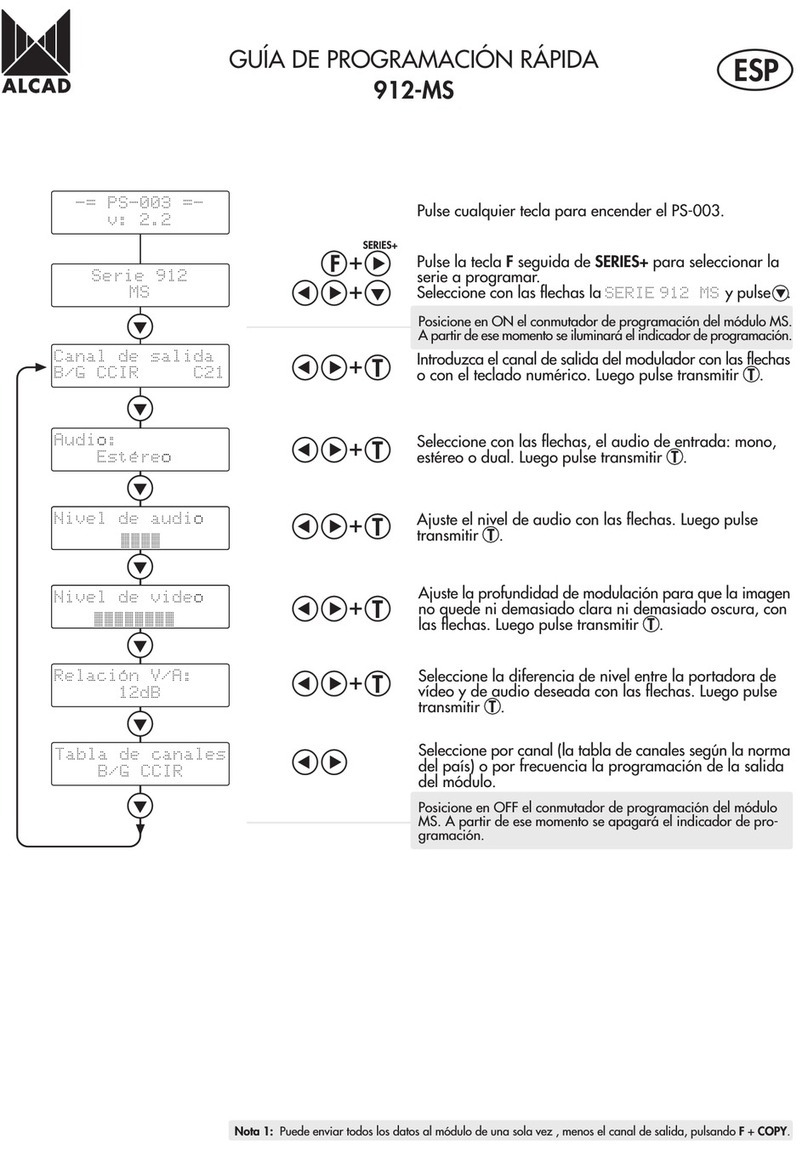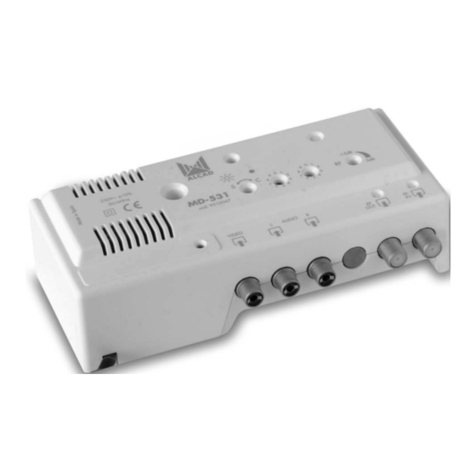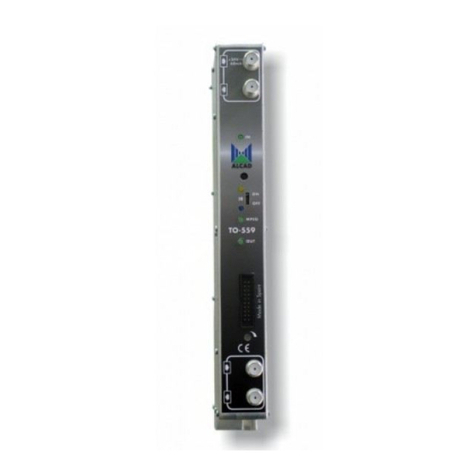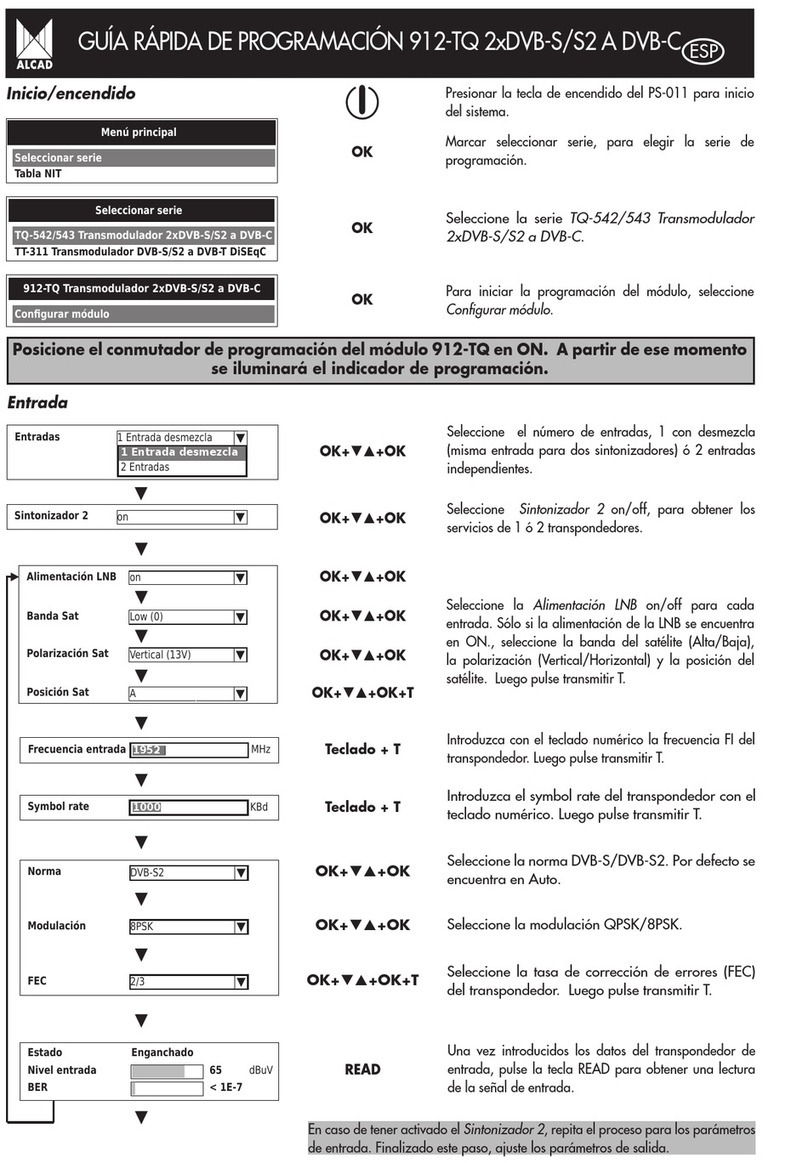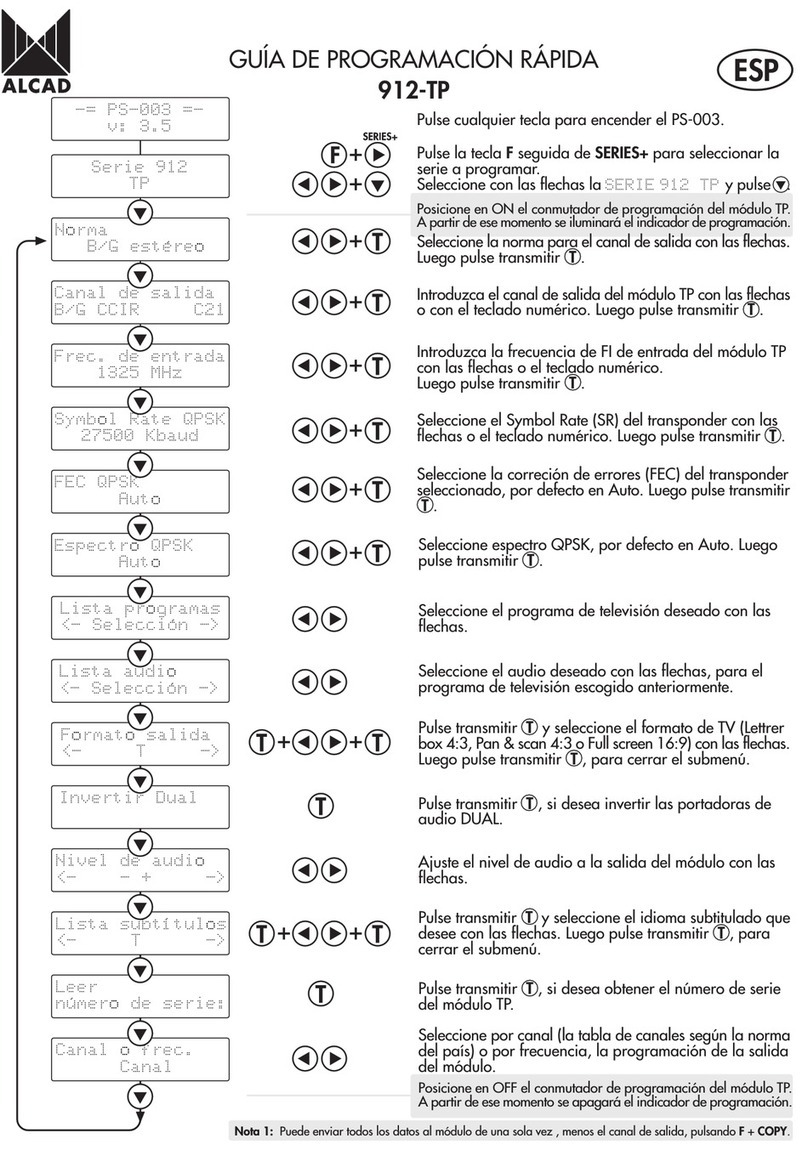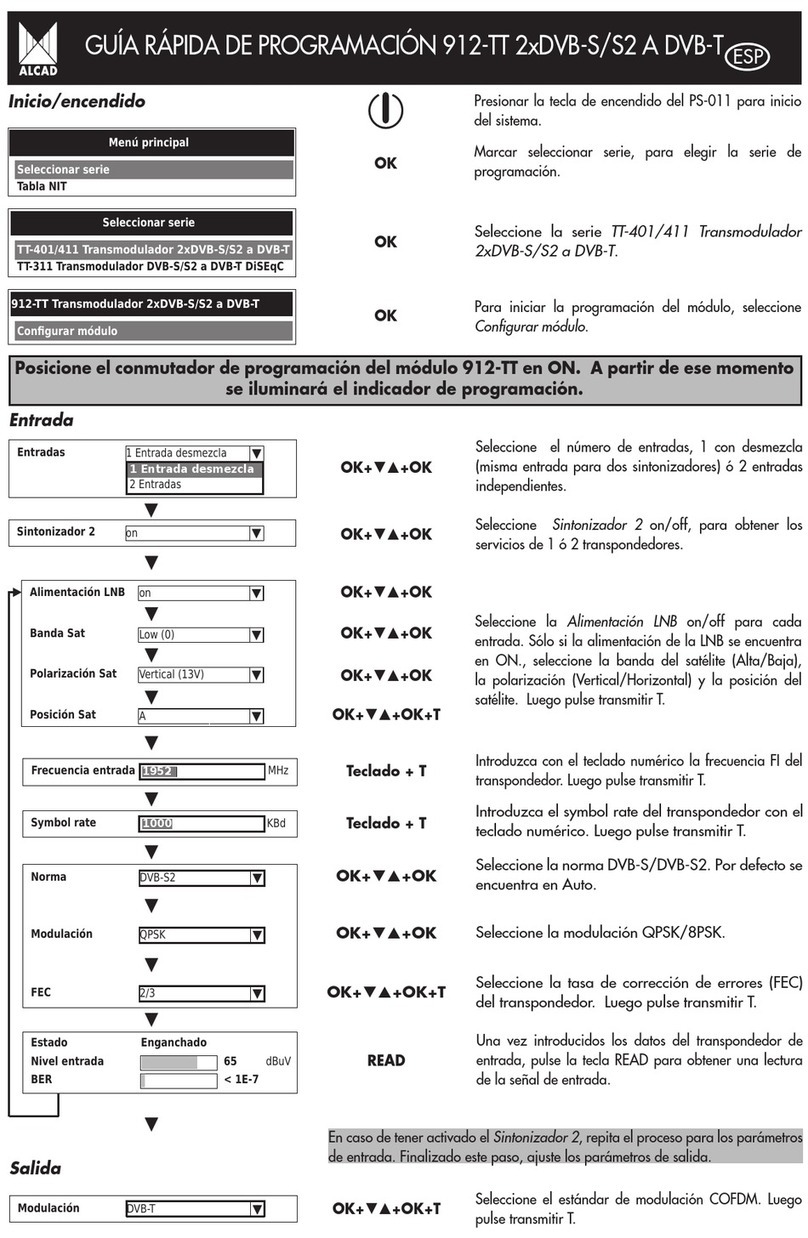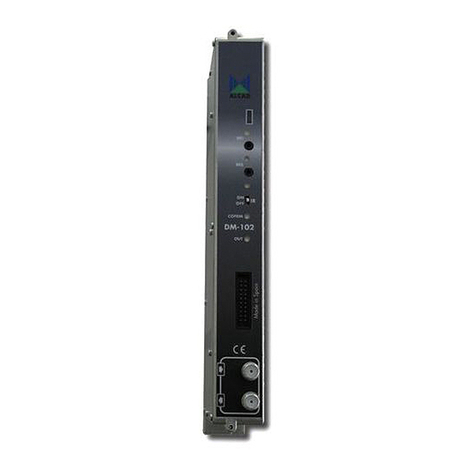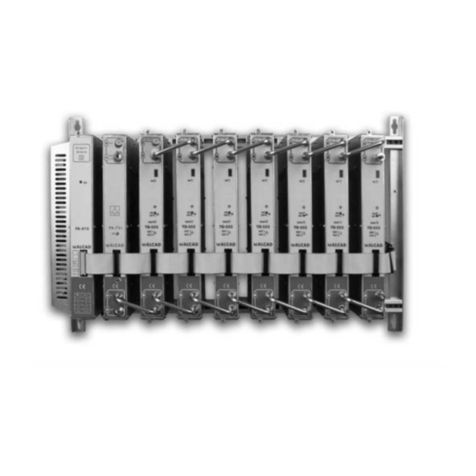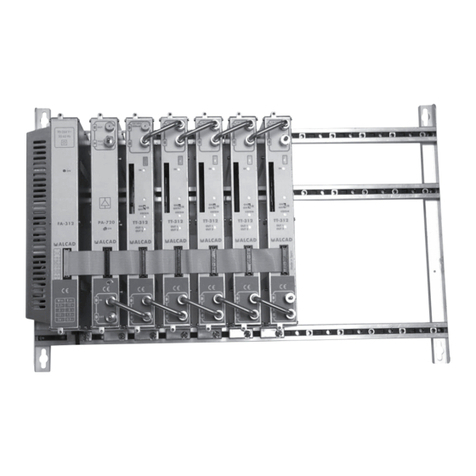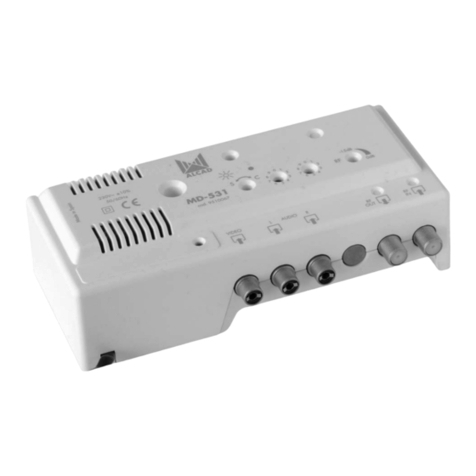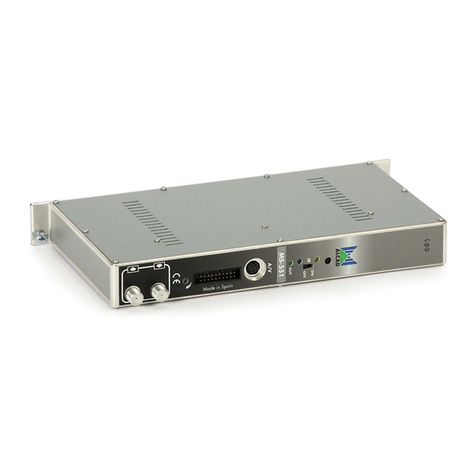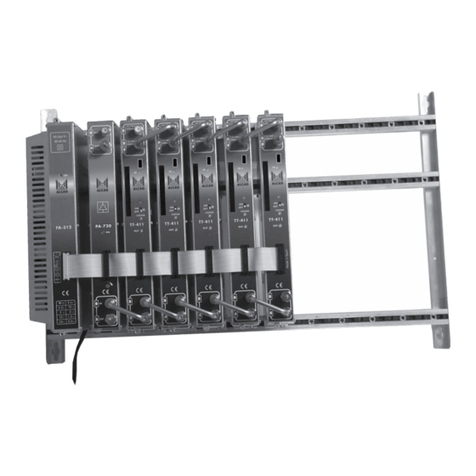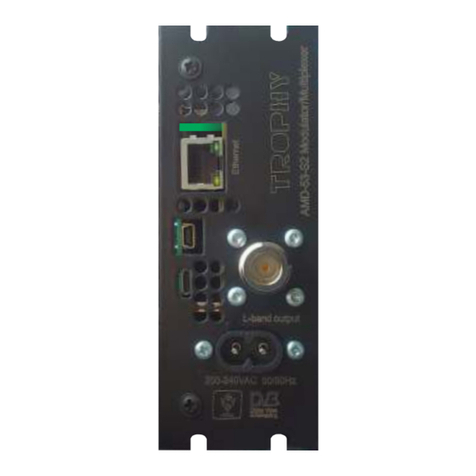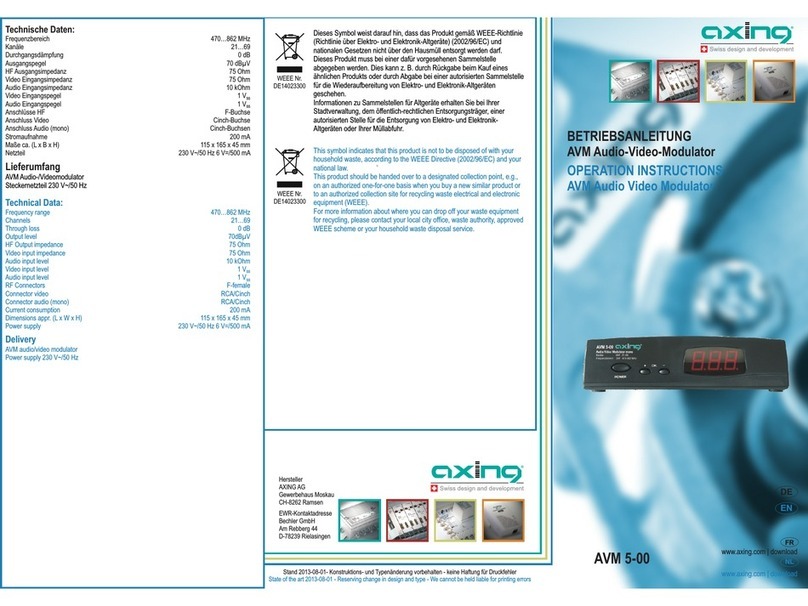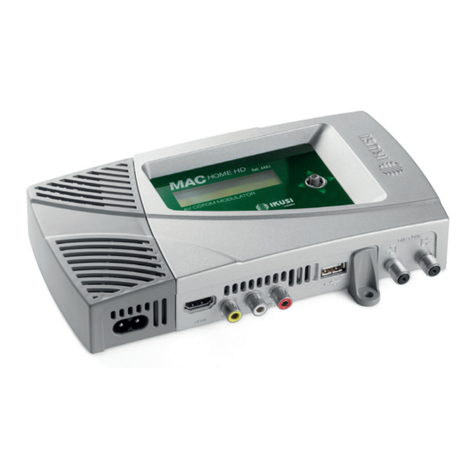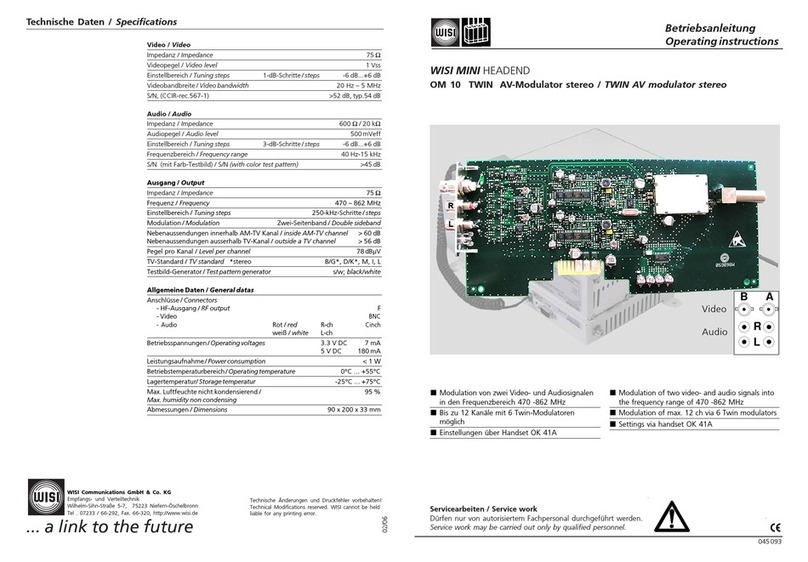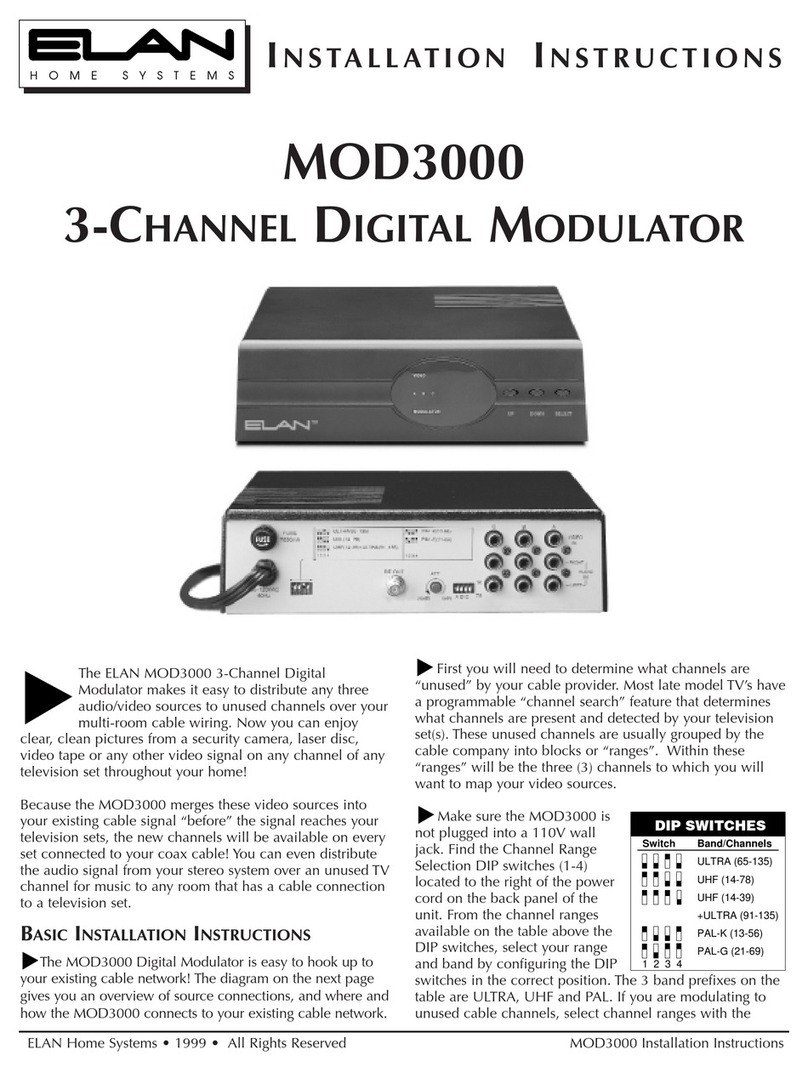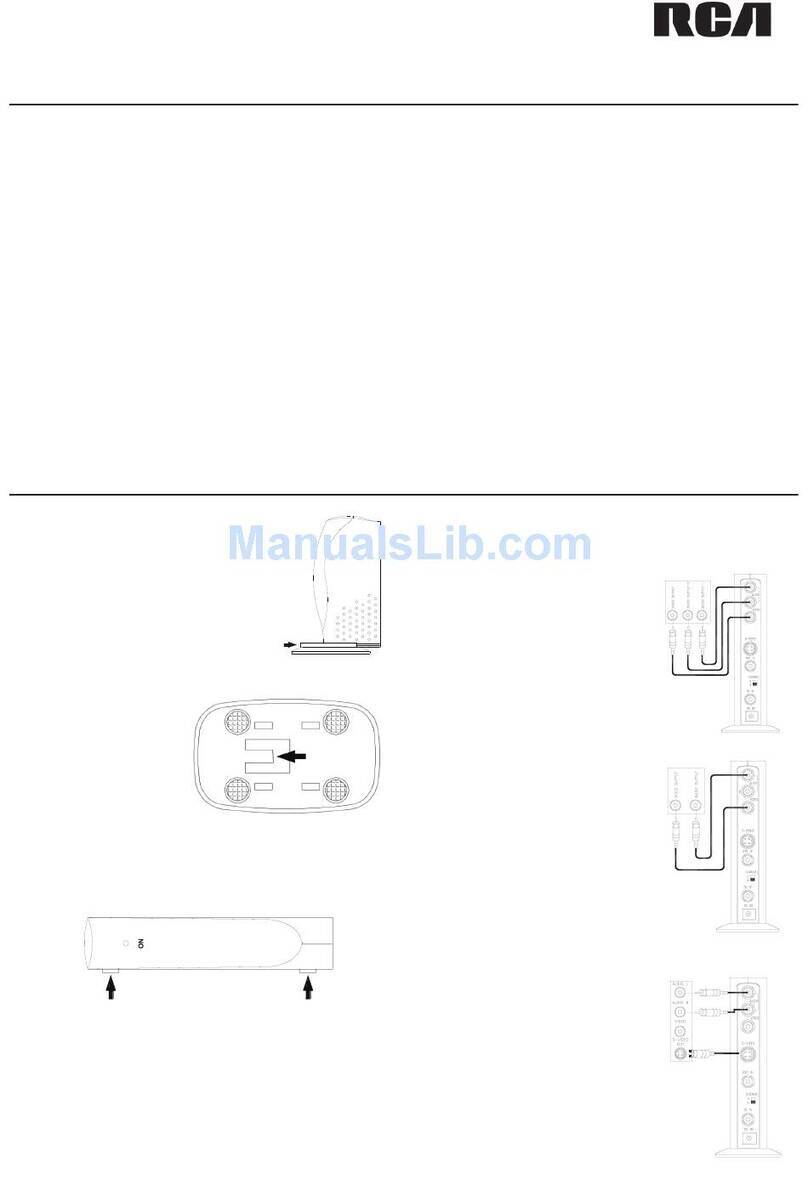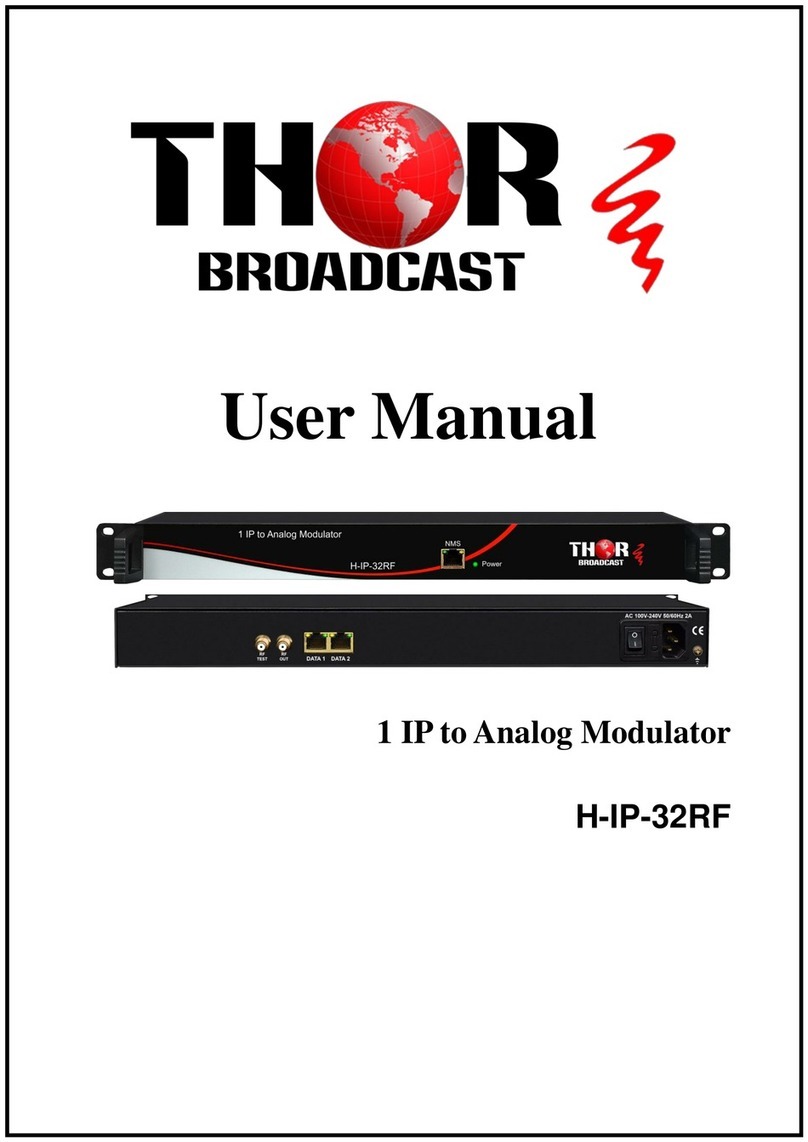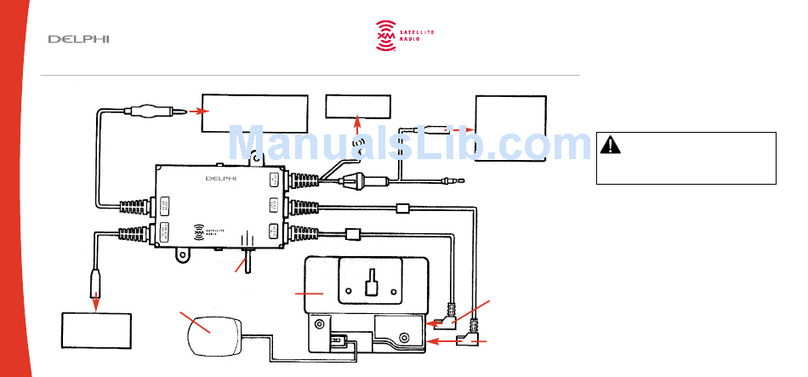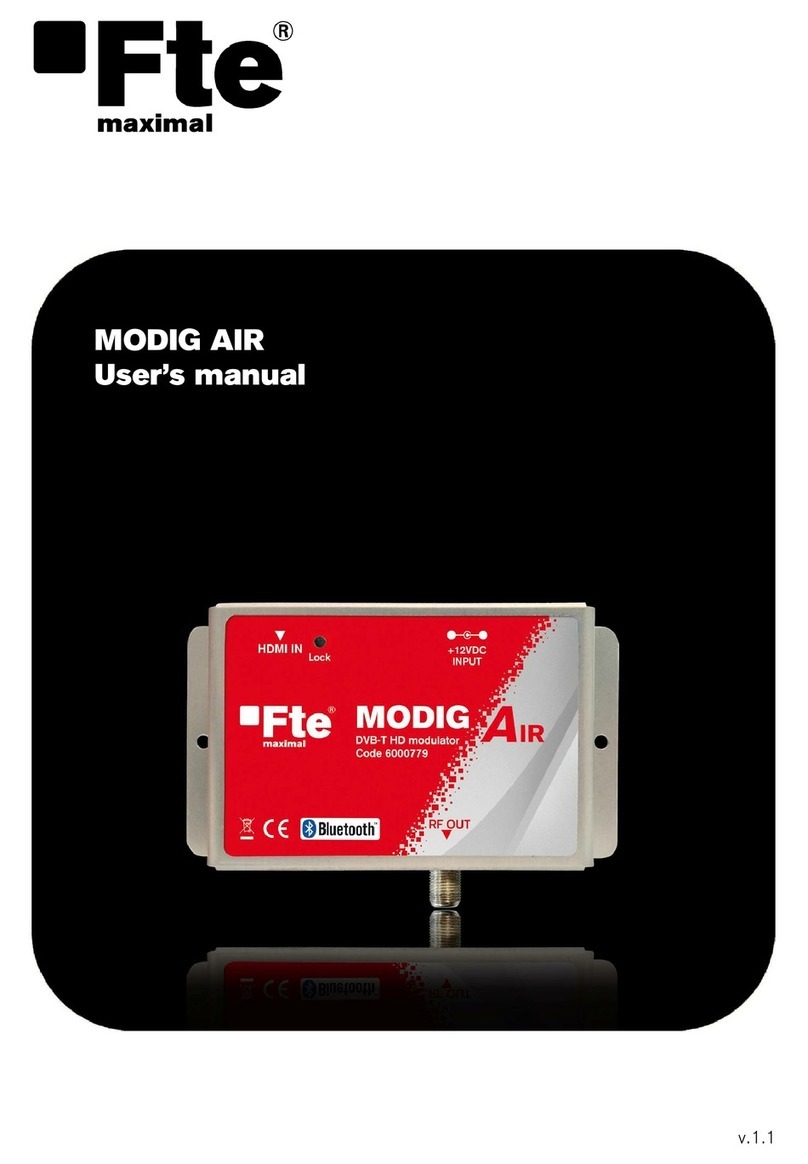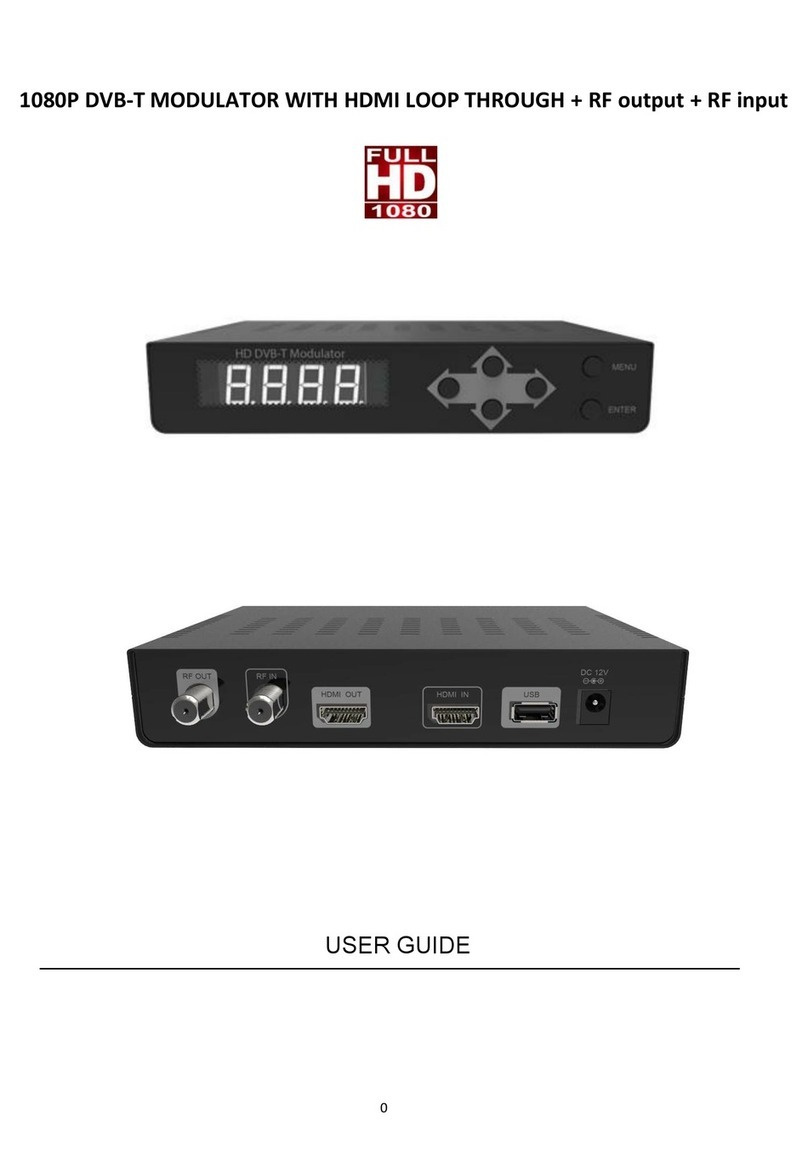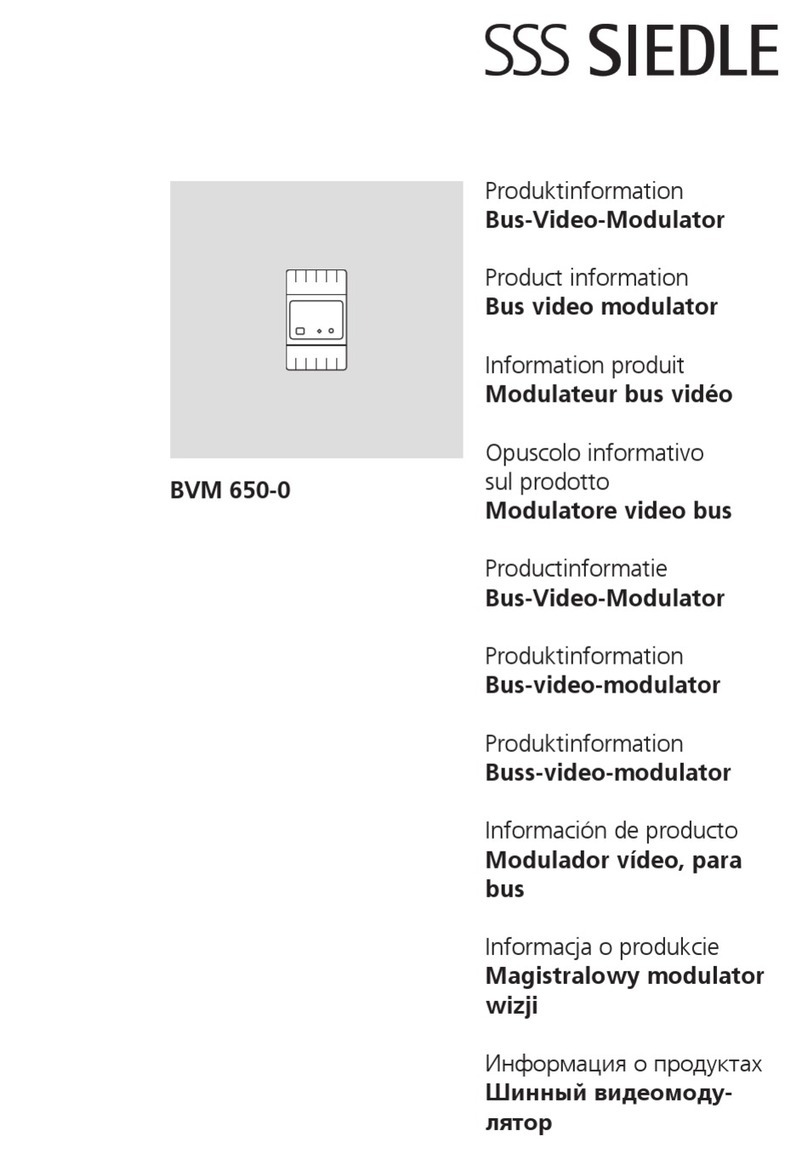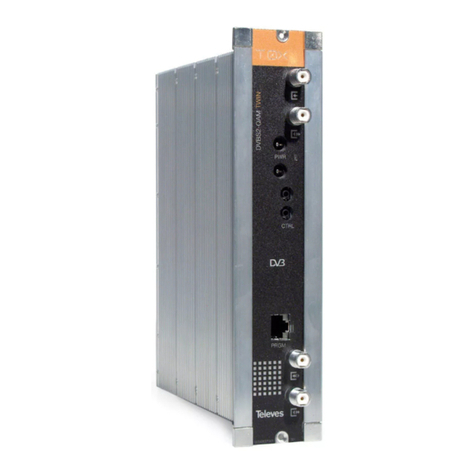
MANUEL DE PROGAMMATION RAPIDE 912-TT DVB-S/S2 Á DVB-T FRA
Fréquence 471.25 MHz
Atténuation 14 dB
Largeur bande MHz
8
Mode 8K
8K
2K
Modulation 64QAM
QPSK
16QAM
64QAM
FEC COFDM 7/8
7/8
2/3
3/4
5/6
1/2
Intervale garde 1/32
1/32
1/16
1/8
1/4
Id cellule 0
Id TS 1078
(COD) Service à accès conditionel 1
(COD) Service à accès conditionel 2
(FTA) Service à accès libre 1
(FTA) Service à accès libre 2
(FTA) Service à accès libre 3
LB totale 81%
Id rés orig Id réseau 1
1
15%
13%
17%
17%
19%
TV
TV
TV
TV
TV
✓
✓
✓
✓
✓
CAM
Services
Si la sortie est programmée par fréquence, saisissez la
fréquence avec le clavier numérique. Appuyez alors sur
T pour transmettre.
Saisissez l’atténuation à la sortie du module avec le
clavier numérique. Appuyez alors sur T pour transmettre.
Sélectionnez l’Offset de la fréquence de sortie parmi
les options disponibles. Appuyez alors sur T pour
transmettre.
Sélectionnez la largeur de bande du canal de sortie :
6, 7 ou 8 MHz. Vous pouvez faire ceci avec le clavier
numérique ou le menu déroulant. Appuyez alors sur T
pour transmettre.
Sélectionnez le mode de numéro de porteuses dans le
canal de sortie. Appuyez alors sur T pour transmettre.
Sélectionnez le type de modulation du canal de sortie.
Appuyez alors sur T pour transmettre.
Sélectionnez le taux de correction d’erreurs de sortie
(FEC COFDM). Appuyez alors sur T pour transmettre.
Sélectionnez l’intervalle de garde du signal de sortie.
Appuyez alors sur T pour transmettre.
Vous pouvez saisir un numéro jusqu’à 5 chiffres comme
identifiant de cellule à l’aide du clavier numérique.
Appuyez alors sur T pour transmettre.
Appuyez sur la touche READ pour obtenir une lecture des
services disponibles dans le transpondeur d’entrée.
Sélectionnez les services que vous souhaitez distribuer,
les marquant avec un ✓ (en appuyant sur la touche
OK). Nous recommandons que vous ne dépassiez pas
90% de la largeur de bande disponible.
Quand les services désirés ont été choisis, appuyez sur
T pour transmettre.
À l’aide du clavier numérique, vous pouvez entrer
un identifiant du TS (TSID), pour le cas où il serait
nécessaire à votre installation. Appuyez alors sur T pour
transmettre.
Mettez le commutateur de programmation du module 912-TT en position OFF. Le voyant de
programmation s’éteindra.
OK++OK+T
OK++OK+T
Clavier + T
READ
OK++OK
T
Clavier + T
Clavier + T
Clavier + T
OK++OK+T
ou
OK++OK+T
Clavier + T
ou
OK++OK+T
OK++OK+T
OK++OK+T
Cod. 2636220 - Rev. 02
Off set 0
0
+1/6
-1/6
+1/8
-1/8
MHz
L’état de la table NIT est indiqué en gris si aucune
information n’est disponible ; en vert si la table NIT est
correcte ; et en rouge si la table NIT contenue dans le
module est incorrecte.
Table NIT
Sans information
Valide
Non valide
Non généré
